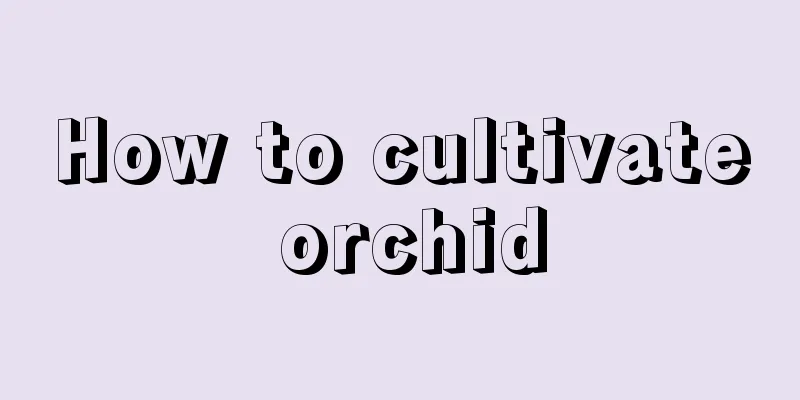How to cultivate orchid

1. Maintenance methods1. Temperature: Orchids grow better and bloom more beautifully in a warm environment. Therefore, it can be kept between 20 and 28 degrees under normal circumstances. When it is hot, it needs to be ventilated in time and not left in a stuffy place. In winter, try to keep the temperature above ten degrees. 2. Light: Orchids like light, especially when they are in the flowering period, they cannot grow without sufficient sunlight. You can always place it in a place with sufficient diffuse light, and try to keep the sunlight time no less than six hours a day. But strong direct sunlight must be avoided, and a slightly shaded or semi-shaded place is more suitable. 3. Watering: It likes semi-wet conditions and is afraid of waterlogging. Therefore, watering should be based on the method of "water thoroughly when dry". In other words, wait until the substrate is completely dry before watering, and water thoroughly each time. But water cannot accumulate in any season. 4. Fertilization: It needs to be used once every half a month. The main types of fertilizers used are phosphorus and potassium fertilizers, especially during the flowering period. 2. Breeding techniques1. Reproduction: Sowing method can be used. This method is suitable when the temperature is between 18 and 20 degrees. If you choose good quality seeds and suitable substrate, germination will be faster. When they grow into seedlings, they can be transplanted. When transplanting, be careful not to damage its roots. 2. Pruning: After flowering, the remaining flower stalks must be cut off immediately. Because if they are not cut off in time, some nutrients will be consumed and nutrients will not be well supplied to the bulbs. The next step is to prune its branches and leaves. Those that are too dense, messy, or dry need to be cut. Its shape can also be repaired regularly. 3. Problem diagnosis and treatment1. Disease: In summer and autumn, a common disease is "powdery mildew". It will cause varying degrees of damage to both leaves and flowers, which can be treated with chlorothalonil. 2. Pests: "Scale insects" and "aphids" are common pests that we are familiar with. They can be treated with omethoate and other drugs. IV. Other issues1. Toxicity: Non-toxic to orchid. Moreover, as a plant, it has the ability to absorb toxic substances. 2. Can it be grown at home? It is a flowering plant with a relatively long flowering period, making it suitable for viewing purposes. |
<<: The cultivation method of Polygonatum multiflorum
>>: How to grow succulent snow lotus
Recommend
How to grow kapok
1. Soil quality The choice of soil for kapok is v...
Which month is the best to plant watermelon?
Watermelon is known as the "king of summer&q...
The whole process of Schisandra chinensis planting method
Schisandra chinensis is a Chinese medicinal mater...
Dendrobium growth environment conditions and characteristics
Dendrobium growth environment conditions and requ...
How long should I water the Clivia after repotting it, and how long should I expose it to the sun after repotting it?
1. How long should I water after repotting? Clivi...
How to water and fertilize the money tree
Watering method The money tree is a relatively dr...
What to do if white palm turns into "green palm"
1. Reasons The flower of Anthurium is called spat...
What kind of vegetables are suitable for growing in glass greenhouses (What kind of vegetables are suitable for growing in greenhouses)
Glass greenhouse vegetable planting The glass gre...
What is the function of plant flowers?
1. Reproduction The flowers of plants are the org...
How to water the lucky flower
Tips for watering the flower of happiness The luc...
How to care for and precautions for the rich coconut
Coconut Tree Growth Conditions The Coconut Tree i...
What to do if the variegated pattern on the leaves of Dancing with the Wind fades
The reason why the variegated color on the leaves...
What are the effects of honeysuckle? Can it remove acne?
1. The efficacy of honeysuckle Clearing heat and ...
How to propagate asparagus fern by cuttings?
Asparagus fern , also known as cloud pine, is nam...
Can succulents be repotted without drying their roots? Succulents can only survive after pruning and drying their roots and repotting them
As we all know, succulents look beautiful and are...









